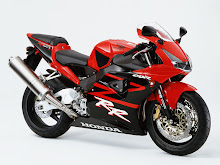
Super Sports Bikes
Until the late 1960s motorcycles came in three basic formats:
Working bikes: Generally below 250 cc (15.3 cu in) and low-powered for commuting and utility travelling.
Kawasaki Z1, however, with its 900 cc (54.9 cu in) DOHC engine finally started the era of the modern sport bike. The Z1 sold so well that by the end of that decade the Japanese manufacturers were all building competing machines similar to the Z1 with its DOHC inline-4 engine configuration. The resulting "bike war" among the Japanese manufacturers and required investment in modern engine manufacturing contributed to the demise of the flagging British motorcycle industry.
Entry-level
Entry-level sport bikes are designed to introduce motorcyclists to the sport bike design. They are relatively inexpensive, lightweight, and durable. There are minimal to no fairings installed to cut down on cost and maintenance if the motorcycle is dropped. Although capable of more power, the engines are usually detuned for longevity and durability. Entry level sport bikes can usually accommodate riders of all heights and weights.
Honda CBR600RR
 Super sport bikes (also known as middleweight sport bikes) are designed for optimal performance on a race track. They are generally built around a high revving, small displacement powerplant that is usually sized around 600 cc (36.6 cu in) to 800 cc (48.8 cu in). Most super sport bikes will carry a wet weight between 375 lb (170 kg) to 450 lb (204 kg) and produce around 110 bhp (82 kW). Because of how strongly focused super sport bikes are on race track performance, riders below 5 ft 3 in (1.6 m) in height will generally not be able to flatfoot (the placement of both feet completely flat on the ground while sitting on a motorcycle) these types of sport bikes. Taller and heavier riders may find the rider ergonomics in the default position to be cramped and uncomfortable.
Super sport bikes (also known as middleweight sport bikes) are designed for optimal performance on a race track. They are generally built around a high revving, small displacement powerplant that is usually sized around 600 cc (36.6 cu in) to 800 cc (48.8 cu in). Most super sport bikes will carry a wet weight between 375 lb (170 kg) to 450 lb (204 kg) and produce around 110 bhp (82 kW). Because of how strongly focused super sport bikes are on race track performance, riders below 5 ft 3 in (1.6 m) in height will generally not be able to flatfoot (the placement of both feet completely flat on the ground while sitting on a motorcycle) these types of sport bikes. Taller and heavier riders may find the rider ergonomics in the default position to be cramped and uncomfortable. Examples include the Honda CBR600RR, Suzuki GSX-R600 and Triumph Daytona 675.
Ducati 1098 S Tricolore super bike
 Super bikes are large displacement super sport bikes. They have characteristics similar to the smaller super sport bikes which are mainly focused on race track performance, but are powered by larger engines that are usually sized around 800 cc (48.8 cu in) to 1,200 cc (73.2 cu in). A typical super bike will carry a wet weight between 400 lb (181 kg) to 480 lb (218 kg) and can produce 180 bhp (134 kW). Super bikes with a displacement very close to 1,000 cc (61.0 cu in) are sometimes referred to as litre bikes. Motorcycles in this class are usually eligible to participate in Superbike racing.
Super bikes are large displacement super sport bikes. They have characteristics similar to the smaller super sport bikes which are mainly focused on race track performance, but are powered by larger engines that are usually sized around 800 cc (48.8 cu in) to 1,200 cc (73.2 cu in). A typical super bike will carry a wet weight between 400 lb (181 kg) to 480 lb (218 kg) and can produce 180 bhp (134 kW). Super bikes with a displacement very close to 1,000 cc (61.0 cu in) are sometimes referred to as litre bikes. Motorcycles in this class are usually eligible to participate in Superbike racing.Examples include the Ducati 1198, Suzuki GSX-R1000, Honda CBR1000RR, and Yamaha YZF-R1.
Suzuki GSX1300R hyper sport bike
Hyper sport
Hyper sport bikes are very large-displacement sport bikes with a strong emphasis on top speed and acceleration. They are typically powered by motors displacing 1,100 cc (67.1 cu in) to 1,400 cc (85.4 cu in). Hyper sport bikes are bigger and heavier than super bikes, with wet weights generally of around 500 lb (227 kg). The increased weight compromises racetrack capabilities in favor of stability at speeds that can exceed 180 mph (290 km/h). This compromise also allows manufacturers to design much more comfortable rider ergonomics.
Examples include the Honda CBR1100XX, Kawasaki Ninja ZX-14, and Suzuki Hayabusa.
 Main article: Sport touring
Main article: Sport touring
Sport touring bikes are designed for riding longer distances, and are typically more comfortable than the average sport bike. Sport touring bikes are typically heavier, less powerful, and less performance-oriented than super sport bikes, but have more storage space, more comfortable rider ergonomics, and better practicality. Depending on the emphasis on these touring capabilities, sport touring bikes can range from super sport bikes with more comfortable rider ergonomics to full-featured touring motorcycles with sport bike-like capabilities and features.

No comments:
Post a Comment